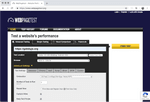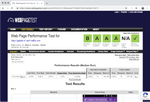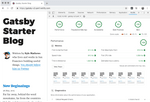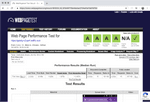We say it all the time: Gatsby sites are blazing fast.
It’s a great tagline. But for you, that might raise more questions:
- What’s the value in being blazing fast?
- How do you know it’s blazing fast?
- How can it be even more blazing (incineratingly?) fast?
These are questions the Gatsby core team has thought about recently, since our recent release of Gatsby v2 improved upon Gatsby v1’s gold standard to squeeze even more performance out of every site.
And what are some simple, meaningful metrics to know if your site is blazing fast?
Let’s get to it.
At the BBC, 10% of users are lost for every additional second the site takes to load.
Measuring Speed
It can oftentimes be overwhelming and exhausting to truly know all the performance optimizations and web performance acronyms that are helpful to make your site blazing fast. H/2, PRPL, RAIL, FLIP, SPA, SW, TTI, oh my! Gatsby internalizes many of these practices so that you get for free a blazing fast site with smart defaults out of the box. It’s valuable to show rather than tell, so let’s go over some performance monitoring tools and techniques so that you can learn how to measure the speed of your site and measure your site’s performance. In particular, I’ll go over two tools: Lighthouse and WebPagetest, and two metrics, Time to Interactive (TTI) and Speed Index. Armed with the knowledge of these tangible metrics and tools you can empower yourself to know whether your site is actually blazing fast — or merely an impostor.
Lighthouse / Google Audit
Lighthouse is an excellent tool provided by Google Chrome. It’s built into the Chrome browser itself, so there’s no reason to not use and explore the excellent provided functionality.
Lighthouse measures your site’s speed and performance on a variety of meaningful criteria including: performance, progressive web app functionality (e.g. service workers, offline functionality, etc.), accessibility, best practices, and search engine optimization. These core measurements, when maximized, give strong evidence that your site is performant, following the latest web performance techniques, and you know, actually fast.
Our baseline is going to be Gatsby v1. I’ve created a repository that I’ve then deployed to Netlify. To use Lighthouse, simply open up Chrome’s Developer Tools and navigate to the Audits tab, like so:
Chrome will simulate a slower, mobile device, and measure the performance of your site on the criteria previously mentioned. Of particular note is the trace, which takes screenshots of your site as it loads. The less blank white screens your users see, the better. The quicker your site loads in this trace, the happier your users will be as your site is actually blazing fast and a joy to use.
Maximizing this trace coupled with a concept known as TTI, or Time to Interactive, means that not only does your site load fast, but that it is able to be accessed and actually used quickly too. If your site shell and content loads quickly, but JavaScript and other resources are still blocking the main thread, your users will leave your site and/or grow frustrated! Blazing fast isn’t just the appearance of loading fast, it’s loading fast coupled with actually being fast, and TTI is a great metric to consider as a performance baseline.
Running a performance audit on a Gatsby v1 site gives us these results in Lighthouse:

💯 Pretty speedy! We had our work cut out for us in improving upon this standard, but we did 💪.
It’s also pertinent to discuss Speed Index when discussing performance measurements. Speed Index is “… the average time at which visible parts of the page are displayed.” In effect, Speed Index gives us an idea how fast the separate pieces of our page are loaded and filled in. A page that loads disparate elements–e.g. the header, page content, sidebar, etc.–more quickly is a page that gives your user the sense of a fast-loading page. Couple a quick speed index with a blazing time to interactive, and you have a page that not only gives the appearance of loading quickly but one that is also ready to use quickly. This is the gold standard we strive for at Gatsby.
Lighthouse is an excellent tool for providing evidence that your site is fast, and it does so by using local emulation and simulation of slow networks and slower devices, e.g. CPU throttling. However, to really know that your site is fast, there’s no replacing testing on a real device, which is where an excellent tool WebPagetest is valuable.
WebPagetest
WebPagetest allows you to collect performance measurements in running on a real device, e.g. a Moto G on a Fast 3G connection. In other words, it allows you to test your site with real-world devices and real-world network connections, the value of which can’t be overstated! WebPagetest is to Lighthouse what end-to-end tests are to integration tests. Both are valuable, but sometimes it’s nice to know your web page’s performance in real-world conditions, and WebPagetest provides a means to accomplish that task.

Running a test in WebPagetest will pull up the specified site on the browser/network specified, and then collect performance measurements that can be reviewed and analyzed. These tests can serve as a baseline that can be compared against after changes are made, e.g. like a change in comparing the Gatsby v1 site to the Gatsby v2 site 🤓. Additionally, it’s helpful to run these tests fairly often after meaningful changes and features are added to your website, to ensure that you’re guarding against performance regressions! For your consideration, check out Gatsby v1’s metrics in WebPagetest.

Armed with the powerful combo of Lighthouse, WebPagetest, and a knowledge of some useful performance terms like TTI, we can now shift into a discussion of the changes in Gatsby v2 that improve performance over Gatsby v1 in meaningful, real-world ways. We’ll come back to both of these tools as it relates to the Gatsby v2 site to actually prove that we’ve improved performance over our Gatsby v1 baseline!
Improving upon Gatsby v1
Gatsby v1 was in many ways an experiment to prove out some meaningful ideas:
- Injecting content at build time from remote data sources with GraphQL
- Statically rendering React components to HTML to maximize performance and SEO
- Static site generation and app-like functionality with React hydration
- A pluggable and extensible architecture to augment and enhance Gatsby’s base feature set and give Gatsby superpowers.
Pull data from WordPress at build time? Sure. Author your application in TypeScript? Seems reasonable. All this while maintaining sane and optimized defaults to truly squeeze every ounce of performance out of your application.
Gatsby v2 set out to build upon this solid foundation, while focusing on improvements in speed and developer experience.
Speed improvements
It’s not ? science. Shipping less JavaScript to your end users makes your application faster to load, parse, and use. Think hard whether that slick launch animation and heavy above the fold hero image are actually meaningful to the quality experience your users want. Every additional byte of JavaScript has an associated parse and evaluation time that you’re forwarding along to your end users.
— Addy OsmaniAs much as I love JavaScript, it’s always the most expensive part of your site.
To that end, Gatsby v2 ships 31% less JavaScript in its client runtime. While we’d love to brag about this, most of the credit goes to smart optimizations in libraries we rely upon: React–upgrading from 15 to 16–and @reach/router–swapped in place of react-router. Much like performance optimizations, build upgrades, etc. are available for free in something like [create-react-app][create-react-app], these upgrades in Gatsby v2 are available for free simply by updating to Gatsby v2 by following the migration guide. The power of opinionated, optimized toolsets that internalize smart defaults!
| Version | React | Router | Total |
|---|---|---|---|
| v1 | 49.8kb |
18.4kb |
68.2kb |
| v2 | 34.8kb |
6kb |
40.8kb |
Bringing it home
Let’s take another look at performance in Gatsby v2 by revisiting our trusty friends Lighthouse and WebPagetest. Refer to the repo and deployed site to judge for yourself!
Lighthouse


Once more: lower is better 😉
WebPagetest

| Version | Speed Index | Time to Interactive |
|---|---|---|
| v1 | 1.787s |
2.532s |
| v2 | 1.657s |
2.457s |
We’ve shaved off ~75ms from Time to Interactive, while also improving the Speed Index score 💪
Wrap Up
Gatsby v2 is an iterative approach to improving the solid foundational base that was Gatsby v1. By upgrading your site, you can fully realize these performance benefits and deliver that blazing fast experience your users want, need, and expect. You’ve learned some tangible ways to measure performance so you can prove for yourself that your site is as fast as it should be. Finally, you’ve learned in more depth about some of the changes and improvements that will be available merely by upgrading to Gatsby v2. Follow our migration guide and update today to see for yourself!
